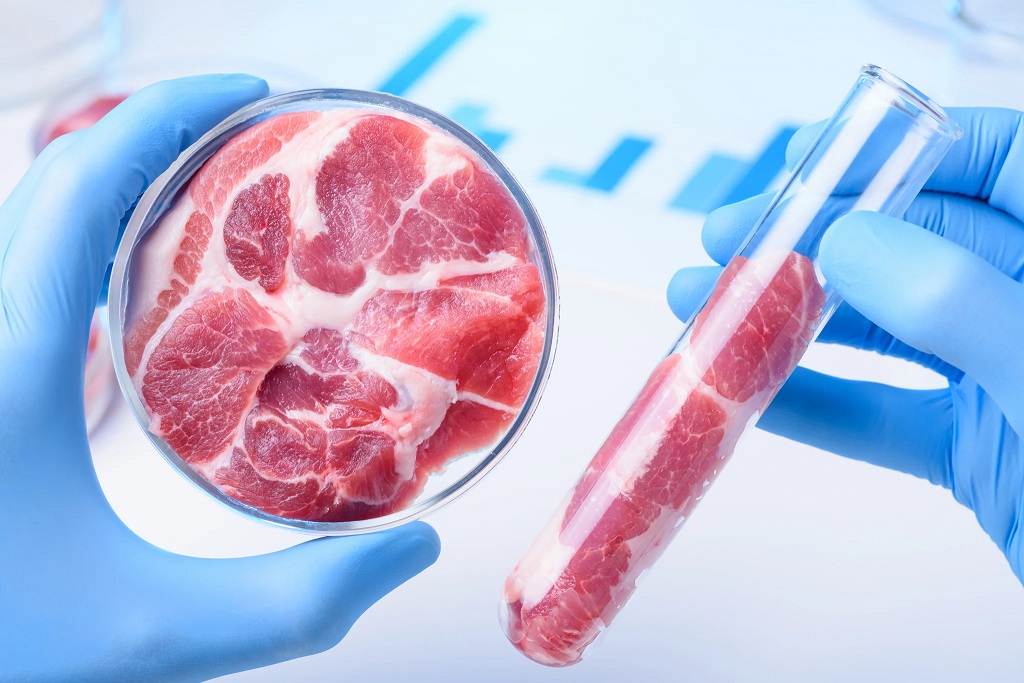
As the global population continues to rise, concerns about food security and environmental sustainability are at an all-time high. Meat consumption plays a significant role in this discussion, with traditional livestock farming facing growing scrutiny for its environmental impact. Enter lab-grown meat, a revolutionary technology promising a more sustainable and ethical approach to meat production.
This article delves into the heart of the debate surrounding lab-grown meat vs. traditional farming. We’ll explore the science behind lab-grown meat, analyze its environmental benefits, and compare it to traditional farming practices in terms of sustainability, ethics, and potential drawbacks.
Understanding Lab-grown Meat: A Cellular Revolution
Lab-grown meat, also known as cultivated meat, is not a plant-based substitute. Instead, it utilizes real animal cells to produce meat in a controlled laboratory environment. Here’s a breakdown of the process:
- Cell Collection: A small sample of muscle cells is ethically obtained from a live animal, typically through a painless biopsy.
- Cell Proliferation: These cells are cultured in a nutrient-rich medium, allowing them to multiply.
- Differentiation: The cells are then stimulated to differentiate, specializing into muscle cells as they would in a living animal.
- Scaffolding: A three-dimensional structure is used to provide support to the growing muscle cells, mimicking the structure of natural meat.
- Harvesting: Once the cells have grown sufficiently, the lab-grown meat is harvested and processed for consumption.
A Boon for Sustainability? Examining the Environmental Impact
Livestock farming is a significant contributor to greenhouse gas emissions, deforestation, and water pollution. Lab-grown meat proponents argue that this technology offers a more sustainable alternative:
- Reduced Land Use: Lab-grown meat requires significantly less land than traditional farming, potentially mitigating deforestation and habitat loss.
- Lower Emissions: The production process emits fewer greenhouse gases compared to raising livestock, potentially contributing to combatting climate change.
- Water Conservation: Lab-grown meat requires considerably less water than raising animals for meat, helping to alleviate water scarcity issues.
Beyond the Environment: Ethical Considerations
Traditional animal agriculture raises significant ethical concerns, particularly regarding animal welfare practices. Lab-grown meat offers a potential solution:
- Reduced Animal Suffering: This technology eliminates the need for large-scale factory farming and the associated ethical concerns about animal confinement and treatment.
- Increased Transparency: Lab-grown meat production can be closely monitored in controlled laboratory environments, potentially leading to greater transparency and ethical sourcing.
The Debate Continues: Challenges and Considerations for Lab-grown Meat
While lab-grown meat holds immense promise, certain challenges need to be addressed:
- Cost-Effectiveness: Currently, the production process is expensive. Technological advancements are needed to make it commercially viable and affordable.
- Regulation and Safety: Regulatory frameworks for lab-grown meat are still evolving. Ensuring safety and addressing potential risks is critical.
- Consumer Acceptance: Shifting consumer preferences towards lab-grown meat will require education and addressing potential anxieties about the technology.
Traditional Farming vs. Lab-grown Meat: A Balanced Perspective
Neither lab-grown meat nor traditional farming is a perfect solution. A balanced perspective is essential:
- Sustainable Practices in Traditional Farming: Traditional farmers can adopt more sustainable practices like rotational grazing, improved manure management, and utilizing alternative feed sources.
- Complementary Solutions: Lab-grown meat doesn’t have to replace traditional farming entirely. Both methods can co-exist, catering to different consumer preferences and contributing to a more sustainable food system.
The Future of Food: A Collaborative Approach
The debate surrounding lab-grown meat vs. traditional farming is complex. Innovation in both sectors is crucial to ensure food security and environmental sustainability for future generations. Collaboration between scientists, farmers, policymakers, and consumers is essential to navigate this complex food landscape responsibly.
Looking Ahead: A Sustainable and Ethical Food System
Ultimately, the goal is a future with a sustainable and ethical food system. Lab-grown meat represents a potentially transformative technology, offering a more sustainable and humane way to produce meat. By addressing the challenges and fostering responsible innovation, lab-grown meat has the potential to revolutionize the way we think about and produce food.

Beyond the Debate:
This article has explored the key arguments surrounding lab-grown meat and traditional farming. As you consider this information, remember:
- Stay informed: Keep an eye on advancements in both lab-grown meat technology and sustainable farming practices.
- Support responsible options: Look for labels that indicate sustainable farming practices or explore lab-grown meat options as they become available.
- Advocate for change (continued): Support policies that promote a more sustainable and ethical food system. Engage in conversations about the future of food and encourage responsible innovation.
Related: How to Make Waffle Hotdog Recipe
Embrace the Future of Food with Open Minds and Informed Choices
The future of food is brimming with possibilities. Lab-grown meat represents a significant step towards a more sustainable and ethical food system. By staying informed, making responsible choices, and advocating for positive change, we can all contribute to a future where delicious and nutritious food coexists with environmental responsibility and animal welfare.
